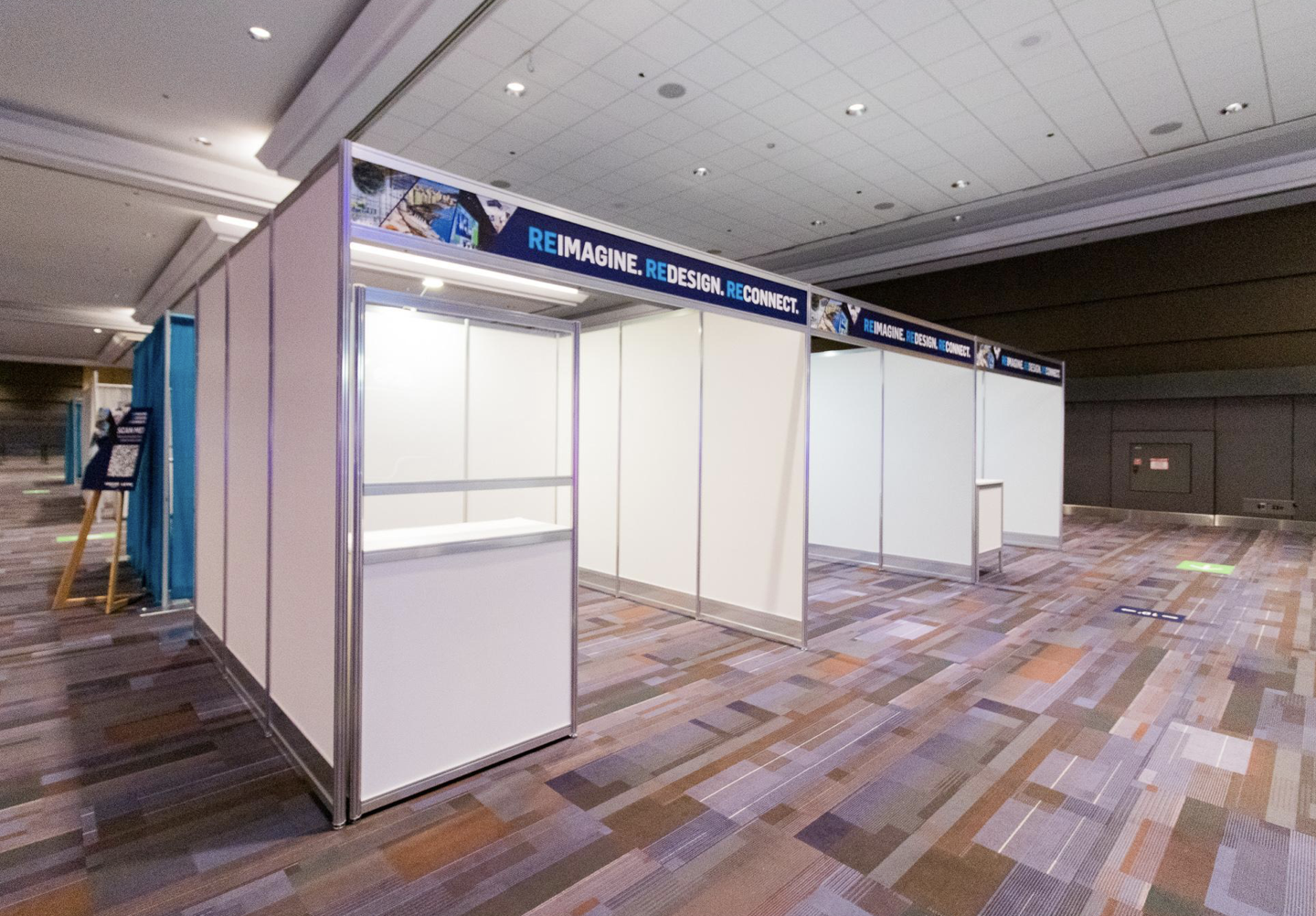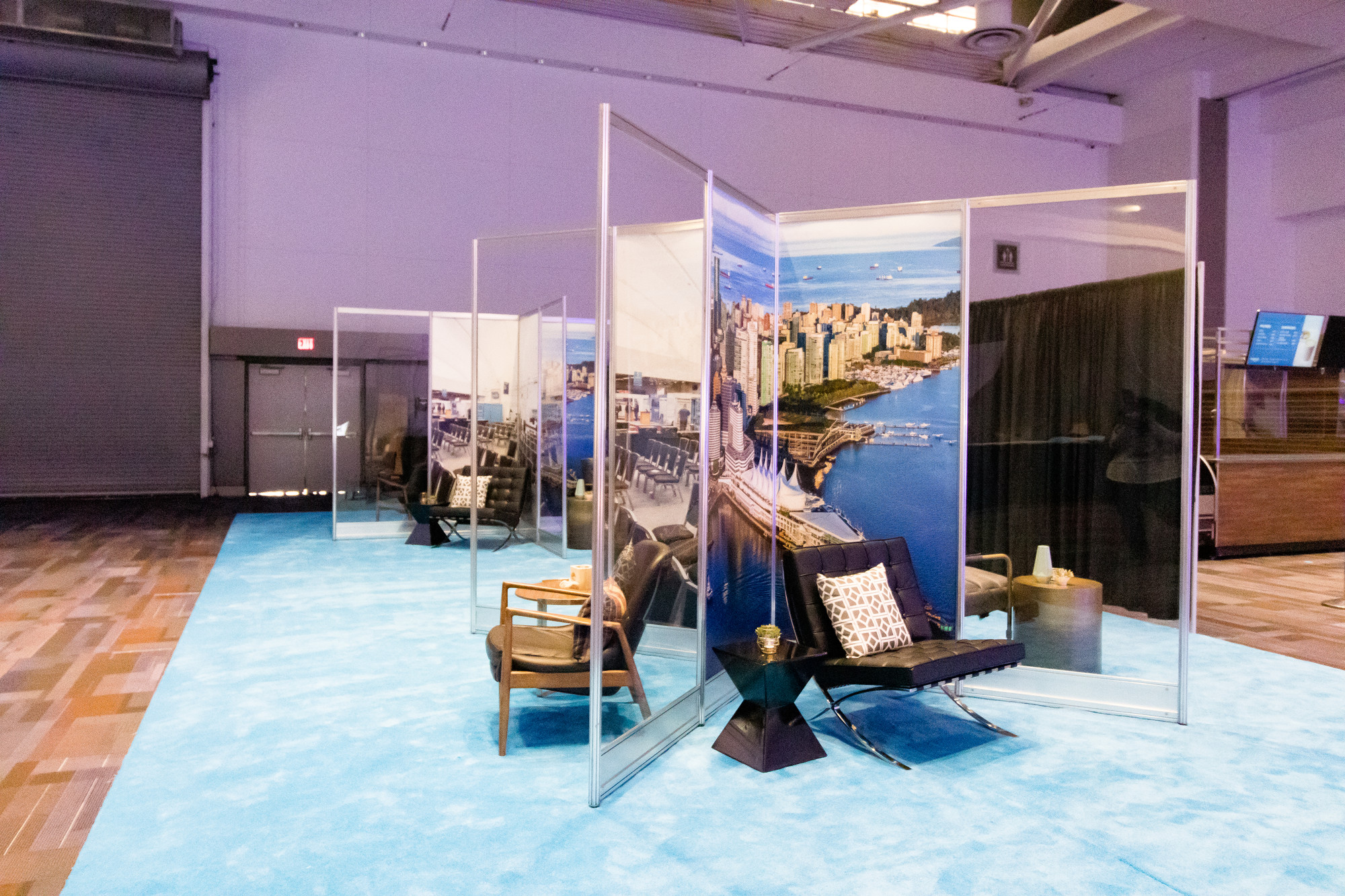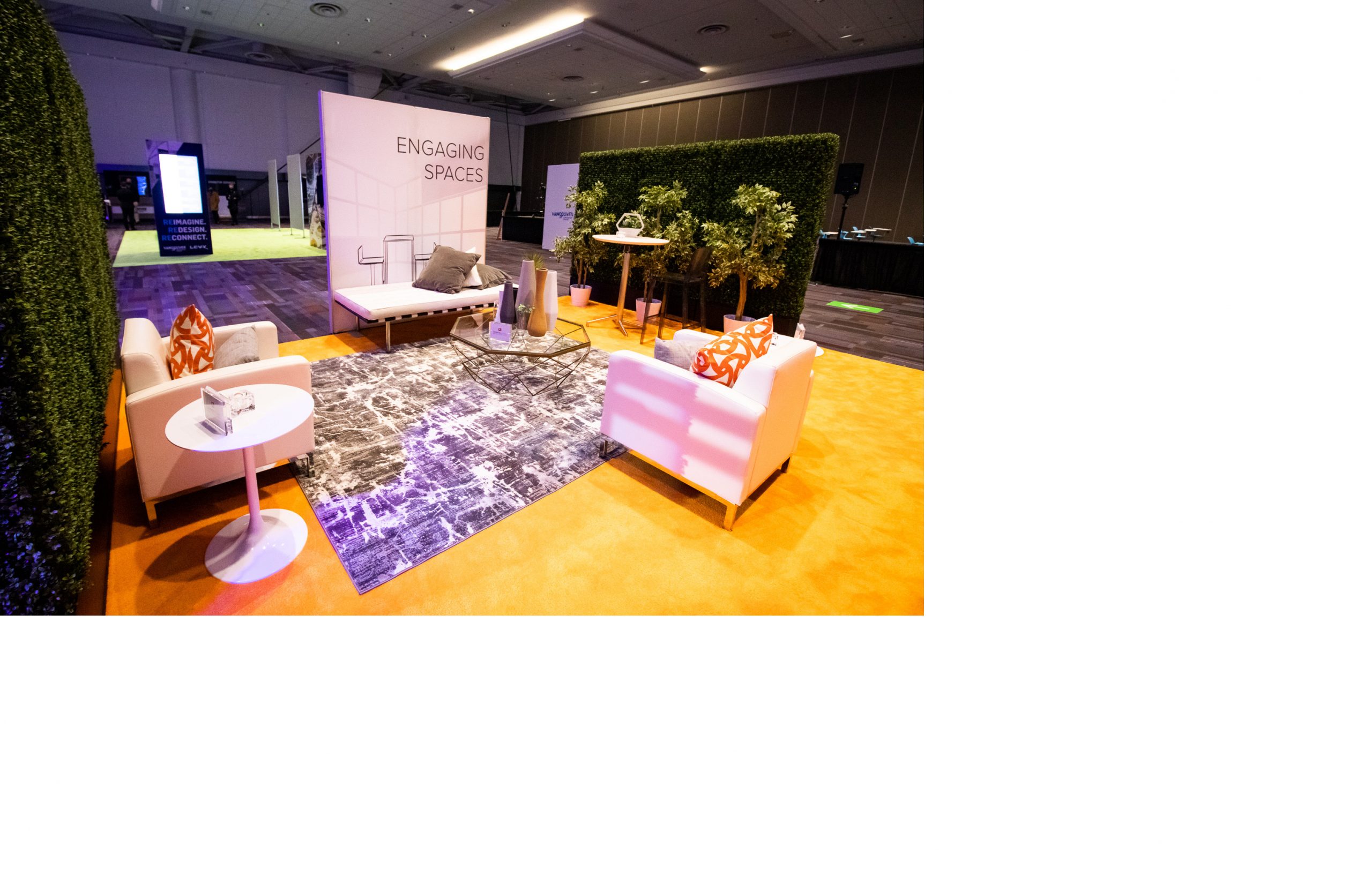With the news this week that a third Covid-19 vaccine has become available to the public—prompting President Joe Biden to say that all Americans could be vaccinated by the end of May—the meetings and events industry is preparing for the possibility of holding sizable in-person business events as soon as July. Case in point: Houston has 19 citywide conventions booked for the coming July-December period, compared to just 12 citywides that took place over that period in 2019.
What will help to get events moving again is the fact that meeting venues and show companies have been busy redesigning event spaces for the post-pandemic landscape ever since in-person meetings went on hiatus in March 2020. One example comes from the Vancouver Convention Centre, which recently held an event called ReDesign to demonstrate new show-floor designs in conjunction with Canada-based Levy Show Service. The event allowed a few dozen meeting planners from Western Canada to come on site to view the show-floor set-ups in person, while others could watch parts of the event online.
What They’re Seeing
David Hay, director of sales and business development for Levy, says that one constant his company has seen during its global research of new designs is a widening of trade-show aisles. Organizations are expanding them from 12 feet to 18 feet for side aisles with a one-way traffic flow, and to 24 feet for central aisles that allow two-way traffic flow. Also, “instead of having 90 feet of booths before aisles intersect, you have only 45 feet between intersections to give people better visibility for keeping their distance from others. It’s also a good idea for the poster-session areas at medical shows because it gives each small group of doctors at a station a bit more distancing space.”
 As for individual booths, one design idea being considered is “moving away from the popular North American design of a high back wall but low sidewalls that allow diagonal visibility into a booth,” says Hay. Instead, “we’re moving towards the European ‘marketplace’ booth style with full-height side walls and drapes or a shell scheme. It gives attendees peripheral safety by stepping into a booth to be around only one person who is masked and behind a plexiglass divider.”
As for individual booths, one design idea being considered is “moving away from the popular North American design of a high back wall but low sidewalls that allow diagonal visibility into a booth,” says Hay. Instead, “we’re moving towards the European ‘marketplace’ booth style with full-height side walls and drapes or a shell scheme. It gives attendees peripheral safety by stepping into a booth to be around only one person who is masked and behind a plexiglass divider.”
One alternative design: Having no booth adjacent to any other, which would allow exhibitors to have an open layout that features enough space for social distancing without the need for plexiglass shields. In addition, this would allow show management to better observe the happenings across the exhibit floor and ensure safe behavior among all participants.
Technology Comes into Play
For industries that have a lot of hands-on product interaction or touchscreens in show booths, the use of disposable gloves is an easy way to let that continue. But when it comes to having detailed conversations between two masked people separated by plexiglass, the quality of interaction is still compromised.
However, the use of videoconferencing to remotely connect booth visitors with an exhibitor’s product experts or executives is an idea that’s gaining traction. “Attendees can get access to knowledge they wouldn’t normally be able to get in a typical booth conversation, and the company’s experts don’t need to travel to a show to participate,” notes Adam Radziminski, director of events at the Vancouver Convention Centre. “It can also be a great learning session for local reps to experience those conversations while in the booth.”
With Cat-5 fiber-optic backbones in place at most convention centers, the amount of bandwidth needed for simple videoconferencing in booths is typically available. Alternatively, exhibitors could procure their own Wi-Fi hotspots.

